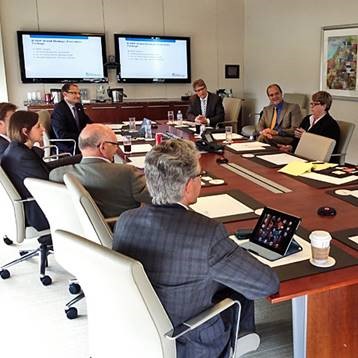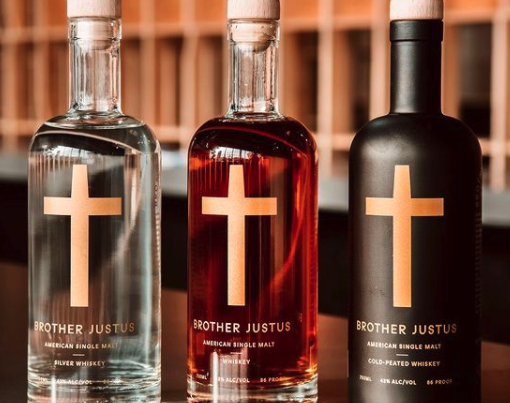Intercultural brand transfer is a new tool for global brand builders
By Patrick Milan, creative insights officer
U.S.-based companies looking for new areas of growth are finding Europe to be a tempting place to export their brands. American brands are exploiting opportunities to steal market share from European competitors that, as the result of the long economic downturn in Europe, have steadily trimmed their investments in marketing, advertising and sales.
For many American business leaders, this scenario is an answer to accelerating growth, getting physically closer to customers and turning their company into a larger global entity. Most business leaders pay extensive attention to building the initial foreign market entry plan and operations strategies. Yet, in their haste to capture market share, the same attention is rarely applied to the cultural translation of the brand.
These companies are learning the hard way that force-fitting a U.S.-centric brand strategy into a foreign market is one of best ways to fail fast. One example: Best Buy’s exit from the U.K. (and exits from Turkey and China, too) had many causes, but at the top of the list, Business Insider noted, “Best Buy marketed itself as too American.”
A strange brand in a strange land
“While European companies, and particularly German ones, tend to over-intellectualize their

“U.S. Brands tend to enter Euro markets ready to conquer rather than be curious.”
– Dr. Carsten Busch
market approach, U.S. brands tend to enter Euro markets ready to conquer rather than be curious,” says Dr. Carsten Busch, professor of the School of IT, Communication & Business at HTW University of Applied Sciences in Berlin, Germany. “The sooner companies adopt an attitude that they are a strange brand in a strange land, the faster they will be able to adapt to meet the needs of the market they are entering. Heritage can be a strength making a unique difference.”
Dr. Busch notes that brand strategies that excel in the U.S. are rarely flexible enough or have the proper targets and messaging to appeal to the European customers. Busch says this is true of consumer brands as well as business-to-business (B2B) sectors.
Getting it right
The luxury retail category has figured it out and has excelled throughout Europe in spite of the lagging economy. Ralph Lauren, Michael Kors and Coach all expanded during Europe’s recession in 2013 — and the investments have paid handsomely.

“Assuming your brand can simply apply American emotional triggers to prospective customers in Europe is a fundamental mistake that can kill an expansion.”
– Ralf Weber
Michael Kors reported a 97 percent increase in sales in the fourth quarter of 2013. Ralph Lauren forecasted accelerated growth from the expansion of its stores during the downturn. The Financial Times reported that the success of U.S. luxury brands was based on their pioneering brand strategies of “affordable luxury lifestyle brands.” FT went on to report “for recession-hit consumers who have maintained an appetite for stylish product, American labels are becoming an increasingly seductive alternative.”
Seduction may be the key here, even as it applies to big business-to-business brands. “80 percent of B2B sales in Germany is personal based on phone calls, visits, trade shows, and all information is evaluated emotionally,” says Ralf Weber, CEO of m/e Brand Communication in Dusseldorf, Germany.
Weber’s firm has assisted high-tech, medical and manufacturing brands as they navigated entries into European markets from China, Japan and the United States. Weber says, “Everyone knows that rationality drives conclusions, while emotion drives actions and behavior. Assuming your brand can simply apply American emotional triggers to prospective customers in Europe is a fundamental mistake that can kill an expansion.”
The cultural transfer of a brand

Guenter Kaefer, senior director of IMK Brand Communication Institute in Berlin, leads the B|SEP process.
A group based in the United States and Germany is gaining serious traction for an intercultural brand transfer process called the Brand Strategic Evaluation Process, or B|SEP . “As part of the B|SEP process, we do a pre-assessment of the brand in its home market, then assess the brand structure against the target market,” says Guenter Kaefer, senior director of IMK Brand Communication Institute in Berlin and Dusseldorf, Germany. IMK is a member of the coalition that designed B|SEP.
Kaefer says the process leads to strategic definitions for a brand in new markets. A global team is deployed to work with a company’s brand leaders to define distinctive examples of brand building communication that are applied against all audience sectors and communication channels.
The process has been successfully deployed by numerous global consumer and B2B brands. An early adopter was the Cincinnati USA Regional Chamber. The chamber used the process to explore and focus its unique strengths when intensifying its business development activities in Germany. Bosch, a worldwide consumer and B2B brand, uses the B|SEP process to translate its brand across multiple foreign markets. Recent users include a U.K.-based safety flooring company, a Japanese manufacturer of med-tech and a Shanghai-based manufacturer of solar panel inverters.

The global team of B|SEP experts meet with a client in Cincinnati in a collaborative session to pre-assess a brand in its home market and test that structure against the target market.
In the end, B|SEP is about identifying and understanding the cultural codes of the markets where companies want to export their brands. A brand built to a cultural code for Americans rarely translates well to foreign markets.
B|SEP’s creators and practitioners will lead a cultural brand transfer discussion in Minneapolis on September, 24 2015. To attend or receive more information, complete this form.
What are your observations on brands exporting into new markets? In your opinion, who has nailed it? Which companies have gotten nailed and why? Share your thoughts and why you think they succeeded or failed in the comments.






